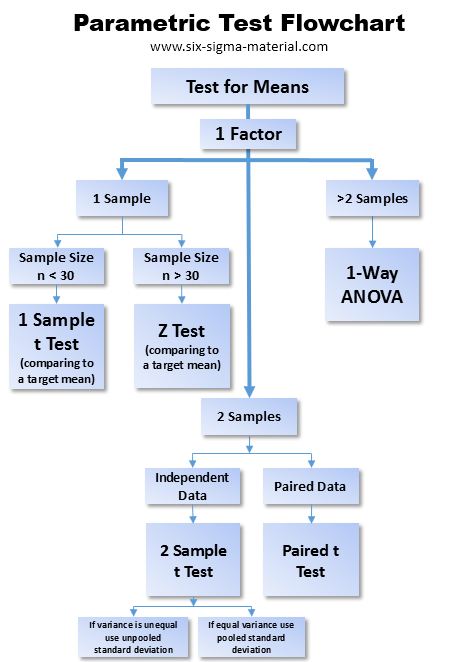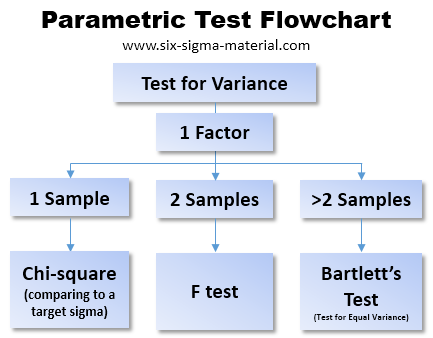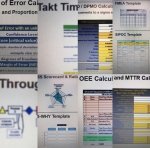Parametric Test Flowchart
The ability to choose the correct statistical test to analyze data is an expectation for a Six Sigma Project Manager.
In general, the power of these standard parametric tests are greater than the power of the alternative nonparametric test. As the sample size increase and becomes very large the power of the nonparametric test approaches its parametric alternative. Parametric test implies a distribution (often a normal distribution) is assumed for the population.
Nonparametric test also assume that the underlying distributions are symmetric but not necessarily normal. The population is assumed to be distribution-free which implies the population is not assumed to follow any particular distribution.
When the choice exists on whether to use the parametric or nonparametric, if the distribution is fairly symmetric, the standard parametric tests are better choices than the non-parametric alternatives.
These Parametric Test Flowcharts shown below indicate commonly applied tests but there are more. Visit Basic Statistics for more information on the frequently applied types of tests.
Non-Parametric Test Flowcharts

Site Membership
LEARN MORE
Six Sigma
Templates, Tables & Calculators
Six Sigma Slides
Green Belt Program (1,000+ Slides)
Basic Statistics
Cost of Quality
SPC
Process Mapping
Capability Studies
MSA
SIPOC
Cause & Effect Matrix
FMEA
Multivariate Analysis
Central Limit Theorem
Confidence Intervals
Hypothesis Testing
T Tests
1-Way ANOVA
Chi-Square
Correlation
Regression
Control Plan
Kaizen
MTBF and MTTR
Project Pitfalls
Error Proofing
Z Scores
OEE
Takt Time
Line Balancing
Yield Metrics
Sampling Methods
Data Classification
Practice Exam
... and more
Need a Gantt Chart?







